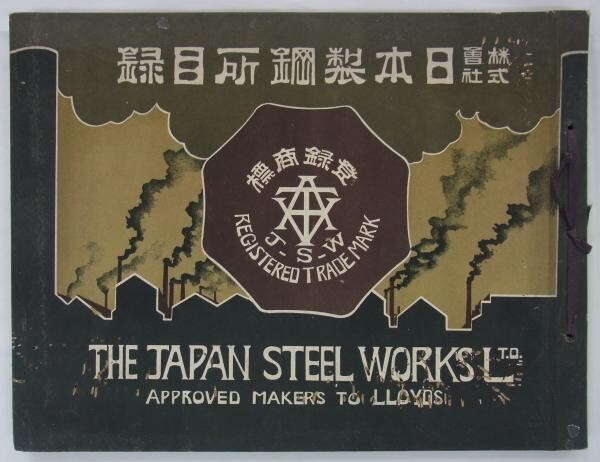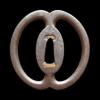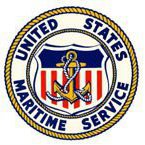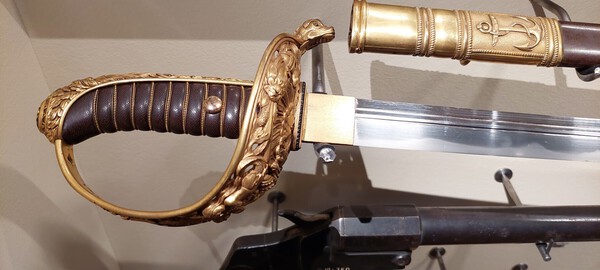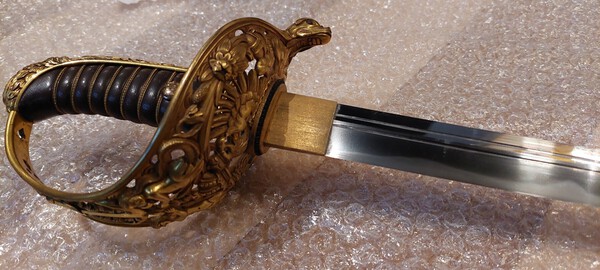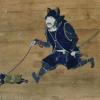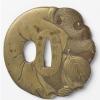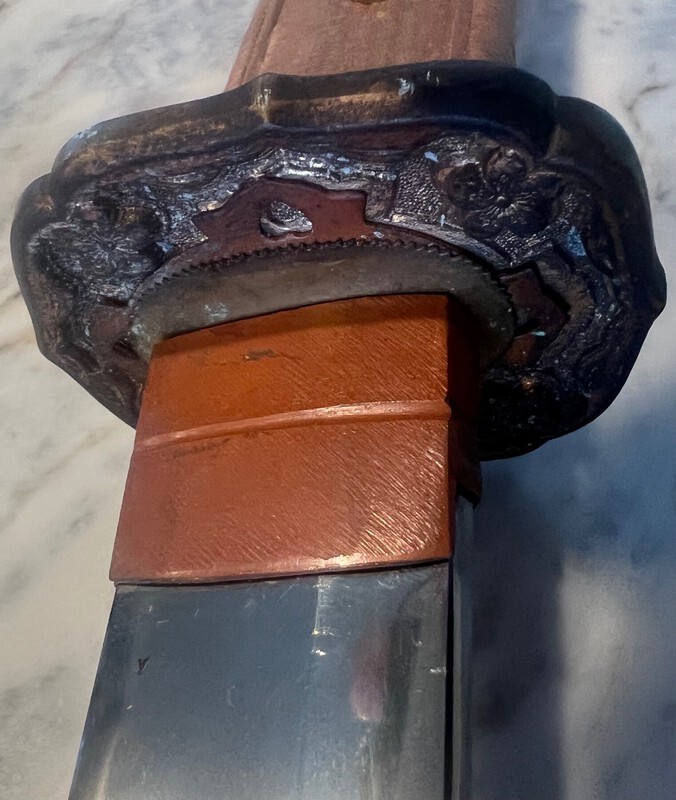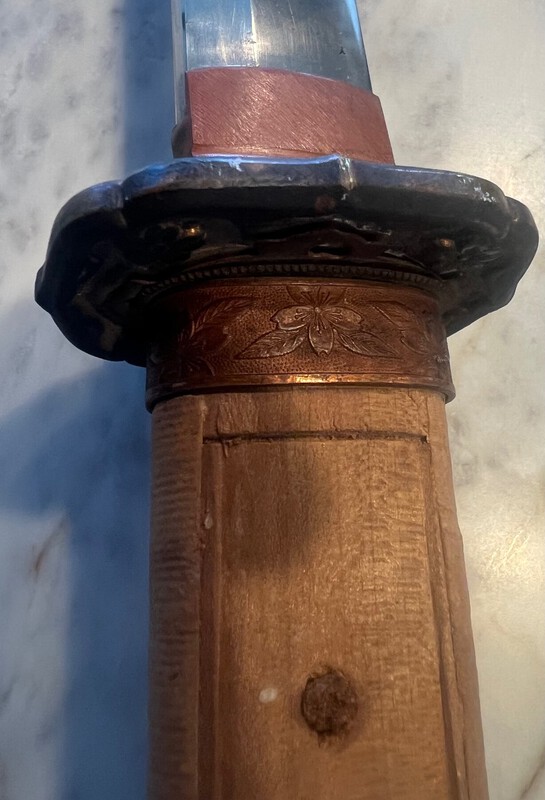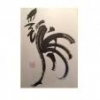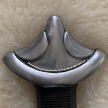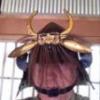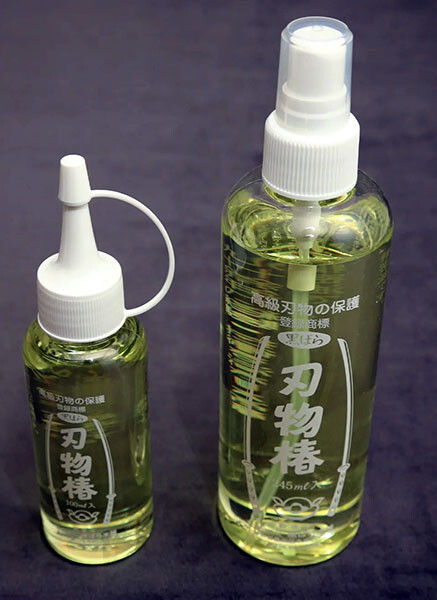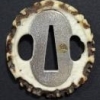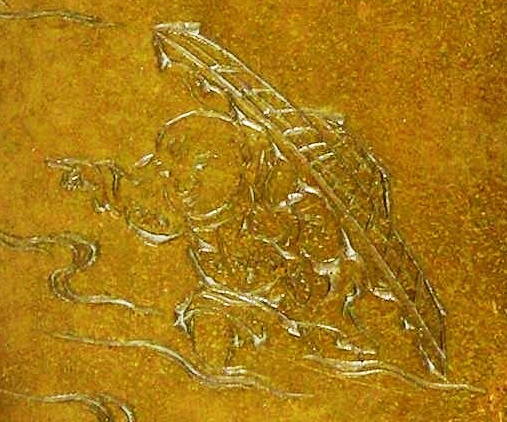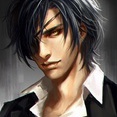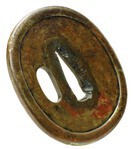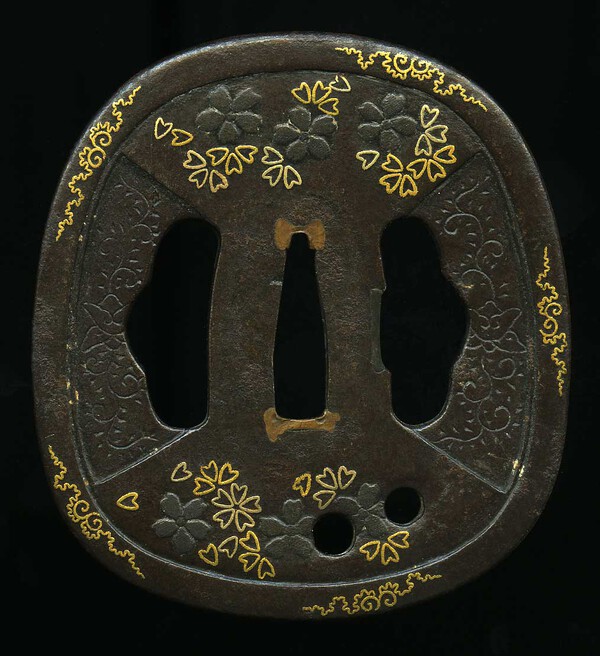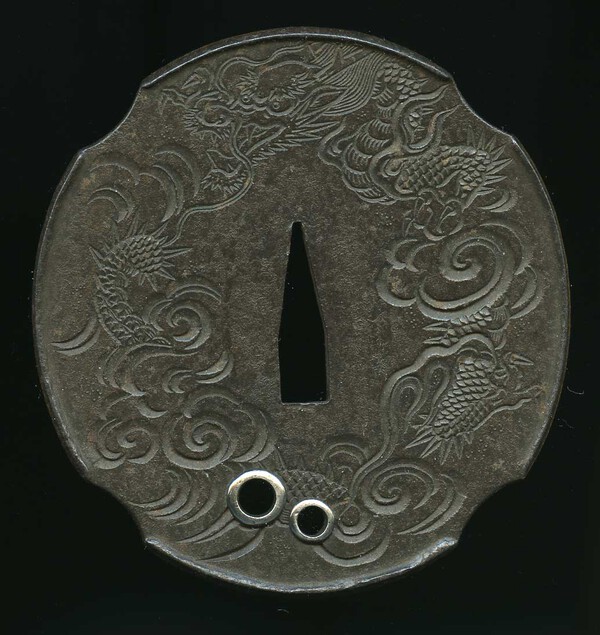Leaderboard
Popular Content
Showing content with the highest reputation on 09/21/2024 in all areas
-
Koshirae: Mon on Fuchi, pinned Kabutogane, mark on Saya where removable hanger originally was. All fittings numbered "56". Not very common to find good early fittings like this, especially on a Zohei-To. Blade: Arsenal blade with Bohi in good condition, slight staining and tiny dints to edge (pictured). Kokura arsenal mark on Nakago. Please see photos for condition. Nagasa: 65cm Moto-haba: 2.8cm Mounts: 100cm SOLD4 points
-
@PNSSHOGUN @drb 1643 日露戦争で、戦艦「三笠」は帝國連合艦隊の旗艦であった。ロシアのバルチック艦隊を殲滅した「日本海々戦」の前年(明治37年)、「三笠」は「黄海々戦」で後部二連装主砲の一門を破壊された。 この破壊された主砲残鉄を使って刀剣を造る計画が水交社(海軍士官の親睦団体)などで持ち上がっていた。 昭和3年2月17日、「日本海々戦に有名な軍艦「三笠」の殊勲を記念したいと海軍で研究中の處、十二吋(30㎝)副砲※を室蘭にいる刀剣界の権威、瑞泉氏に見せた處「立派な日本刀が出来る」というので短剣・長剣三千口を作ることとなりその見本が水交神社に奉納する一組と安保海軍大将に一振り送付された」と函館新聞は報じた (新聞要約、※ 主砲の誤記。加賀美憲晴様のご指摘で判明) 昭和3年1月~7年5月の間、この砲身残鉄を使用して(株)日本製鋼所室蘭工業所 (現室蘭製作所) 瑞泉鍛刀所の名門刀匠堀井秀明一門 が作刀。 三笠長剣(229本)・甲種三笠短剣 973本 (皇国興廃在此一戦の彫刻)・乙種三笠短剣 451本が造られ、「水交社」を通じて販売された。 他に、特攻隊生みの親、大西滝治郎中将の愛刀「以軍艦三笠砲鋼 秀明作」の日本刀等がある。 銘は12種以上有り、銘から推測して、砲鋼のみ使用の火造り刀から、玉鋼併用の鍛錬刀まで作刀方法は数種類あった。 銘(12 Mei as follow) 三笠・以三笠砲鋼・以三笠砲鋼作之・以軍艦三笠砲鋼・以三笠艦砲身作之・加三笠砲鋼・加三笠砲鋼精鍛・加和鋼以三笠砲材 加軍艦三笠砲鋼精鍛之・秀明・源秀明・室蘭住秀明作 三笠短剣の人気が高く、短剣の製作が一段落した後、水交社は更に追加製作を日本製鋼所に依頼した。 昭和6年7月、日本製鋼所と水交社の間で『短刀の茎に「三笠」と「社章」(創立当時の旧社章)を刻む』ことで合意した。 然し、秀明が「数打ちは甚だ迷惑至極御免被りたし」と 8月に本社に宛てた手紙が存在する。 その為に、秀明の銘は入れず「製鋼所製」と刻んで弟子に打たせる事になったようだ。 この「三笠」の文字と「社章」が刻まれた短刀や「製鋼所製」の銘のある短刀の押し型はない。 Rough translate During the Russo-Japanese War, the battleship Mikasa served as the flagship of the Imperial Combined Fleet. In the previous year (1904, Meiji 37) before the decisive "Battle of Tsushima" in which Russia's Baltic Fleet was annihilated, Mikasa had one of its twin rear main guns destroyed in the "Battle of the Yellow Sea." A plan to use the remaining iron from this destroyed main gun to forge swords was proposed by Suikosha (a naval officers' friendship society) and others. On February 17, 1928 (Showa 3), the Hakodate Newspaper reported, "As the Navy was studying ways to commemorate the distinguished service of the famous battleship Mikasa in the Battle of Tsushima, they showed a 12-inch (30 cm) secondary gun (Note: incorrect, actually a main gun) to the renowned swordsmith Zuisen in Muroran. He stated, 'A fine Japanese sword can be made from this,' and as a result, 3,000 short and long swords were commissioned. A sample set was dedicated to the Suikosha Shrine, and one sword was presented to Admiral Anbo." (Summary of newspaper report; mistake regarding main gun was clarified by Mr. Noriharu Kagami). Between January 1928 (Showa 3) and May 1932 (Showa 7), swords were forged using the remnants of this gun barrel at the Muroran Works of the Japan Steel Works (currently Muroran Manufacturing Works) by the master swordsmith Hori Hideaki and his apprentices from the prestigious Zuisen Swordsmith Studio. A total of 229 long swords (Mikasa long swords), 973 Type A Mikasa dirks (engraved with "The fate of an Empire is decided by this battle"), and 451 Type B Mikasa dirks were made and sold through the Suikosha. In addition, Admiral Onishi Takijiro, known as the father of the Kamikaze forces, owned a famous sword engraved "Made from Mikasa cannon steel by Hideaki." There are more than 12 known inscriptions, and based on the variations in these inscriptions, it is assumed that several different swordmaking methods were employed, ranging from fire-forged swords made only with cannon steel to forge-welded swords made with a combination of cannon steel and tamahagane . The popularity of the Mikasa dirks was high, and after the initial production was completed, Suikosha requested Japan Steel Works to produce additional dirks. In July of 1931 (Showa 6), an agreement was made between Japan Steel Works and Suikosha to engrave "Mikasa" and the "company emblem" (the old emblem from the founding period) on the tang of the dirks. However, there exists a letter from Hideaki addressed to the head office in August, expressing his strong objection to mass production, stating, "I absolutely refuse to engage in such quantity production." As a result, Hideaki's signature was not included, and the blades were inscribed with "Manufactured by Steel Works" and forged by his apprentices. There are no known molds or examples of dirks engraved with the word "Mikasa" and the "company emblem," nor with the inscription "Manufactured by Steel Works."(I think Tom's dirk is one of these) http://ohmura-study.net/204.html4 points
-
Tom I think In addition to having the phrase 皇國興廃在此一戦 (The fate of an Empire is decided by this battle")engraved on the blade, the 甲種 (Type Ko) Mikasa Dirk typically has the swordsmith's name inscribed on the tang. The 乙種(Type Otsu), like yours, usually only has 三笠砲鋼(Mikasa cannon steel)without the swordsmith's signature. However, the Type Ko is generally more commonly seen, while the Type Otsu is less common. http://ohmura-study.net/741.html4 points
-
You got it. It's on Ohmura's website, but the Japanese version has much more information than the English version. English version http://ohmura-study.net/204.html Japanese version http://ohmura-study.net/741.html3 points
-
In July of 1931 (Showa 6), an agreement was made between Japan Steel Works and Suikosha to engrave "Mikasa" and the "company emblem" (the old emblem from the founding period) on the tang of the dirks. However, there exists a letter from Hideaki addressed to the head office in August, expressing his strong objection to mass production, stating, "I absolutely refuse to engage in such quantity production." As a result, Hideaki's signature was not included, and the blades were inscribed with "Manufactured by Steel Works" and forged by his apprentices. There are no known molds or examples of dirks engraved with the word "Mikasa" and the "company emblem," nor with the inscription "Manufactured by Steel Works." I think your dirk is one of those with the company emblem.3 points
-
With the Chonmage hair adornment I would suggest it depicts a samurai inspecting his blades.3 points
-
The axe is called Masakari (鉞) in Japanese. It is a carpenter’s tool and used to shave a log. Ref. 道具を使う『まさかりとちょうな』/竹中大工道具館ビデオライブラリー(Japanese) (youtube.com) The characters on the axe are 登録商標 – Registered trademark 龍之 – Tatsuyuki (reading?) 土佐 – Tosa 特製 – Special made.3 points
-
Ishihara Yoshisada. If you search here in the group you will find a number of posts on Yoshisada.3 points
-
2 points
-
And for @Bugyotsuji…..a lovely matchlock pistol in this sale. https://www.bonhams....t-maroni-collection/2 points
-
The "Star" stamp was not used this early in 1942. It came later in 1942. However, if an army contract blade, it might have some inspection marks on the nakago mune.2 points
-
In Wang Bo's poetry, "二難并“ refer to the rarity of having both a virtuous ruler and an esteemed guest gather together. Could it be that on this blade, the meaning of“二難并” suggests it simultaneously possesses both artistic beauty and practical combat functionality?2 points
-
Reduced to 2000USD + shipping (~100USD to the US). A donation to the board will also be made.2 points
-
From top right to bottom left: Mr. Iwasawa. Aizu Shoami school. Related to Ryōi.There are sukidashi takabori iron tsuba with the name (mei) Iwazawa Ryōchin. Lived in Mutsu (kuni) Iwashiro. Late Edo. The kanji: 岩沢氏。会津正阿弥派。了意の一族。岩沢了陳と銘して鋤出高彫の鉄鐔がある。陸奥国岩代住。江戸後期。2 points
-
Congratulations on your deployment. Ihara Tsutomu (name of recipient). From the "Sanyō Itakami Manufacturing Co., Electronics Section, Sasaki Kiyomatsu" (representative who presented the banner, or in whose name the banner was presented.2 points
-
I have pretty much zero knowledge on AI but I would think in the future the possibilities are going way above my head. However on personal level I just love researching stuff, I will keep doing the same thing even though AI will at some point surpass my own capabilities. Even at the current level, if for example AI would have access all the reference books I have in my personal library it could provide amazing info. Bit scary to even think about what it would be able to do with so much high quality information and data.2 points
-
hi, i do not know yet, no document in the museum states anything about signature and given the knowledge how the collection was kept in the past, i dont think it was ever removed from the fittings, I intend to be the first one to check the nakago2 points
-
From Japanese Sword Index: "The Kanefusa lineage of swordsmiths of Mino Province dates back to the Muromachi era in the 1400's. The 23rd generation Kanefusa worked during the WW II era and was a direct descendant of this famous line of swordsmiths. This lineage continues today with the 25th generation Kanefusa. The 23rd generation Kanefusa's name was Kato Koichi. He was born in 1900. During the Showa period he studied under Kato Jumyo and worked in Seki (Mino / modern Gifu prefecture). During the war years he made many blades for the military, both army and navy, and for civil officials. He won numerous awards in sword exhibitions and contests during this period. He was ranked 1st Seat (National Swordsmith) in the 6th Exhibition of Swords held in 1941 (Slough). He was ranked Kibin no Retsu in 1942 by Kurihara Hikosaburo at the Tosho Banzuke (J.Kim). Many of his blades are signed as being prize winning blades. Blades by the 23rd generation Kanefusa have received origami from the NBTHK or NTHK. This school of swordsmiths is noted for making a special style of hamon known as "Kanefusa midare". There are several blades known made by Noshu Seki 23rd Generation Kanefusa which have the kiku-sui crest carved as a horimono on the blade (not on the nakago). These blades were not made at the Minatogawa Jinja Tanrensho and have no known connection with it. These swords probably were a special order from a group of naval officers or a naval officer's club associated with the Minatogawa battleship. This same style Minatogawa crest is occasionally found on blades by Asano Kanesane. These are also thought to be special order blades and not associated with the Minatogawa Jinja. Among signatures on the 23rd Generation Kanefusa blades are: Kanefusa Fujiwara Kanefusa Noshu Seki ju Fujiwara Kanefusa Seki ju Ni ju San Dai Kanefusa Noshu Seki ju Ni Ju San Dai Fujiwara Kanefusa saku kore (oshigata shown left) Some blades bear inscriptions about awards or being prize winning blades. Sho or Seki tang stamps may appear on the nakago. Some of his blades were signed nakirishi mei. He forged both traditionally made gendaito and non-traditionally made showato using mill steel, thus each blade must be judged on its own merits. Kanefusa blades are found mounted in shin-gunto (army) or kai-gunto (navy) koshirae and shirasaya. The 23rd generation Kanefusa is listed in the Toko Taikan, in Hawley's Japanese Swordsmiths, and the Nihonto Meikan. " Kanefusa produced medium to high-grade showato and medium to high-grade gendaito. As for which your sword is? It would have to be judged in-hand to have a proper opinion rendered. But if there is a noted lack of Seki or Sho stamps, then it speaks more towards the possibility of gendai but it is not conclusive on its own. The present of nie/nioi, hada, and other particle activities would be conclusive. Also, I recognize that you're new to this, so some terminology: Showato = mass produced, machine assisted swords made in a non-traditional manner. They are worth less than gendaito and are usually made considerably less well. Gendaito = hand made, traditionally made swords made of tamehagane. Made during the last few years of the 1800s and up to the end of 1945. They have all the characteristics of older-made Japanese swords and are worth considerably more than showato. I THINK I can see particle activities, but that call should only be made in-hand. You can directly message me if you need more assistance. ~Chris2 points
-
2 points
-
Hi, I am still new to this forum but i want to share with everyone a unique piece, that is my absolute favorite among our vast collection, from the military history institute museum I work at as restorer/conservator. As the title, possibly somewhat confuzingly states, It is a amalgamation of a Japanese blade and Austrian officer navy fittings. I will post some photos but I just found out that the are not great, i can and will take better photos of the blade around monday next week. I will write everything we know about it plus some history toward the style of fittings it is housed in, and the blade was not removed from the handle yet, I have to get to it and find out if it is signed. I will write some history here: Austrian naval officer were issued navy sabers first in 1827, later in 1837 it was changed to more archaic straight blade "kord" or small sword in english. In 1846 new style of saber was adopted again, this model was based on frech navy saber. This model was used during revolution years of 1848-1849 by officers who joined the rebels. After their surrender loyal navy officers requested new type of saber since previous one was, as a symbol of the emeror, disrespected and loyal officers refuzed to wear it. New model 1850 was created with elaborate carving on the handguard, anchor and mermaids, and later in 1871 hangers were added to the scabbard. for refference i have link to our museum website with example: https://www.vhu.cz/e...rnictva-vzor-185071/ Ownership of thissSaber with katana blade was by previous museum staff attributed to heir to the Heir to the throne of Austro-Hungarian empire Franz Ferdinand d´Este. It would be plausible given the quality of the workmanship on the golden fittings and the blade it self. Heir could have acquired it as a gift from Japan during his travels around the world between years 1892 and 1893. There is also some archival evidence (not sure if we have any photo evidence as well) that he admired the swordsmanship while visiting Japan beign avid and quite skilled swordsman himself, although proficient in saber combat only. Visited some showcases of sword combat and possibly participated in some form of friendly sparring. Unortunately this acquisition story is not supported by evidence and place of discovery. Current research by our curator of arms states that this saber belonged to one Hieronymus (Jeroným) VIII. Colloredo Mannsfeld (1870-1942) There are two pieces of information that suppor that it belonged to him, First: he held rank of Corvette Captain and was for quite some time stationed in Tokyo, later he became naval attaché in Berlin. He was overseeing Mansfeld holdings in Bhoemian lands including castle in town Zbiroh where this very saber was found, which is evidence number two. Either way, now to the saber itself: https://www.vhu.cz/e...ictva-vzor-185071-2/ Speaking about the condition, only damage is to kissaki, some light scratches and wear, possibly due to sheating and unsheating of the blade, othervise it is in great condition. This is the few photos i have so far, I hastily took some because there was not time to fiddle with it, we were close to opening the museum after years of renovations, so I had to put it back on display fast. What I will do next week is to get quality pictures of the blade so that everything can be viewed clearly. I know that Japan had many military swords that bore influence from European sabers of the time that were standart issue up until the return of the katana style of blades before Second World war, but i think this is very unique in that it is standart naval officer saber fittings fitted with nihonto. Photos may not speak to its quality but in person the quiality is amazing. I post this here as a curiosity and subject of research i plan to do with this blade, I plan to take it out of its fittings, probably will be first time since its creation. I hope you like my post here, would be nice if this could spark some good conversation or posibly any ideas of its origin, but I understand that without closeup of the nakago and quality photos of the blade it could prove very difficult. Maybye we can follow up at later date. Anyway thank you for reading this far, In near future I will take this off of the display and do some closeup exmination and share what I found. Cheers1 point
-
Dear all I am looking for reference material on F/K by Nara Toshinaga which do either show monkeys/eagles or which are signed on the right side of the fuchi. Let me explain the background of my somehow strange request. I have in my collection a wakizashi koshirae which has formerly been owned by the now closed Tosogu Museum in Tokyo (sold via Christies in the early 2000s). The koshirae has undergone a restoration in the second half of the 20th century. As part of this restoration process, a new saya was made, the original menuki were removed AND the fuchi/kashira WERE REPATINATED. As a result, they look rather new but could in fact be much older. As the fuchi is signed "Toshinaga Kao" and we all know that his mei was very often faked, I had dismissed them as gimei ever since the koshirae came into my possession. I still consider the mei to be at least critical BUT after studying the workmanship for a while I must say that they are really well done. In particular, the ishime ground is very appealing (I tried to focus on this feature in my pictures). The easiest way would of course be to submit them for shinsa. However, the NBTHK has become very hesitant in the last year and when it comes to one of the big names, I guess that my best result could be horyu. And that does not help me at all. That means that I have to trust my own (and maybe your) judgement and would be gratefull for reference material on F/K by Toshinaga (ideally from the book on the Nara San Saku). Kind regards and a big thanks Chris1 point
-
1 point
-
You have a keen eye, Bruce! You've got a point there: it looks like a put together koshirae. Hopefully the blade is worth something.1 point
-
1 point
-
Wow Trystan, you earned your pay today!!! Thank you my friend! I'll add that Japan Steel Works, Ltd. logo to the stamps doc.1 point
-
1 point
-
Pierced tsuba we’re present throughout the war. The early ones were thicker so if you measure the width, it might indicate an earlier one. I don’t remember the dimensions of fat and thinner, but John does.1 point
-
Hi Phil, Having two holes on a WWII showato or gendaito blade is not uncommon. I think many swords were made and the smith put a hole in his 'usual place' and later, the mounting shop finds that the hole doesn't line up with the hilt/binding 'access' points so they put in another hole to line up well. No mystery, and not a sign that the sword has been re-mounted with a new/different set of mounts. Of course, never say never with Japanese swords, so there is always a possibility that it was re-mounted for some reason - battle damage, change to new mounts etc.......I'm just saying that two holes are not uncommon for the reason I give. Just my 2 cents worth..Hope this helps1 point
-
It doesn't look correct at all, carefully check the rest of the fittings to make sure they are matching.1 point
-
Thank you so much Arnaud! The tsuba in the box is an heianjo tsuba. A mismatch....1 point
-
It is an undeniable fact that Rai blades use a multi-layered construction. I posit that this is one of the reason how they outcompeted the Awataguchi school. Simply put, they were able to cut costs of raw material by using a laminated construction. Rai Hada is a distinct discontinuity in the grain of the jihada that appears along the surface following repeated polishing. It is a sign of masterful forging? Not per se, only insofar as it contributes to an attribution to Rai. Now one argue whether this is Shingane (i.e low carbon steel) or medium carbon steel, or a kneaded combination of various materials. I don't find these terminology games to be particularly interesting. And it is confusing to newcomers. Personally I prefer being agnostic on what it is, and speaking simply of core steel, meaning the steel used for the core that shows through the jihada following polishes. Often Shingane is associated with low quality steel. This is not necessarily the case. There is an enormous variation in the quality of core material across periods, schools and smith. And it is also an undeniable that all else being equal, a Rai blade showing intact jihada is preferable to one showing patches of Rai Hada.1 point
-
Yes, in a better Mino nie can concentrate towards the upper portion of the hamon in a pleasant rather than ugly-clustered formation. Very nice. I do have high hopes for the blades with these photos in terms of being an upper class of Kanemoto lineage. Also top level polish because these things are hard to accent and often hadori obscures the finer activities in the habuchi area. Nioiguchi does not seem to be too consistent which detracts from the beauty.1 point
-
Trying to get any information on this sword. My grandfather brought it back from Japan at the end of WW2. I don’t have the details on how he acquired it. A coworker was able to get me a translation of the tang through a close personal Japanese friend. This is what she sent me. “濃州関住二十三代藤原兼房作之(Noushu Sekiju 23dai Fujiwara Kanefusa sakuno) It is the name, the manufacturer of the sword. It seems it says it is made by Fujiwara Kanefusa. It also says he is a Fujiwara 23rd generation of noted swordmaker family in Noushu, now Gifu prefecture. I am not familiar with Japanese history, but it is very interesting to know that your co-worker has historically precious thing in America. I hope it helps!” Any information is greatly appreciated! Chris1 point
-
1 point
-
I cannot comment on the construction style debate as it goes well above my knowledge. I think there might be even various views by experts in Japan on the subject too. For Tōken Bijutsu if there will be magazine number provided I can check the article. There are some extremely technical articles in the magazines over the years but as that is not that interesting to me personally I haven't noted them down and with 600+ magazines in shelf finding some randomly takes bit too much time. However Jacques is correct regarding Nihontō Meikan. It is focused purely on documenting swordsmiths. To bring the discussion little bit back to original topic. I think sometimes even extreme rarity is not valued that highly compared to established smith that are considered to be at high level. Here is a link to a tachi that is so far the only item of Yamato smith Yoshimasa (吉正) that I have been able to find. As you can see even the experts have slightly varying views as NBTHK goes for Senju'in and Tanobe goes for Tegai. Of course not huge difference in the attributions. The sword might not win any beauty prizes but I would much rather have it than just another Tadahiro katana for example. It also comes down to preferences in valuation. The big Japanese dealers are extremely knowledgeable on prices and getting huge deals will be difficult as they know the market most likely much better than us. However I think pricing one of a kind items might be extremely tricky, there are lots of old smiths by whom signed remaining work is extremely difficult to find. However they can be gotten much much cheaper than Nagamitsu, Rai Kunitoshi etc. from whom there are well over 150+ signed examples remaining to this date.1 point
-
1 point
-
Dear Mick. I have a copy and will look it out. From memory it was a Hizen Tadayoshi blade. All the best.1 point
-
Hi Mick, that sounds like the late Captain Raymond Johns. It is mentioned in one of the GB Token society programmes that he took a Wakizashi with him into the trenches.1 point
-
The top two characters are 鳳祥 (Feng Xiang, originally a Shanghai-based jeweller founded in 1849, now a worldwide jewellery brand). I'm a bit less certain about the lower bit. Perhaps 德記 and 辛巳? The latter would indicate that the item was manufactured in 1881 CE (or 1941 CE).1 point
-
1 point
-
1 point
-
Like a dog with a bone - I found the Hotei image, in colour! [it was in my own records- needle in a hundred haystacks] and I know of another publication from the V&A that has a small B&W image "A PICTURE BOOK OF Japanese SWORD GUARDS" 1927 - a booklet of some twenty pages. Trying to save image space here but if you need an image with more resolution send me a PM. Boy on the back with Hotei's hat.1 point
-
Jacques, you used to quote the D-K effect a lot in the past and even had it in your signature before you saw the errors in your ways and much more appropriately have included an environmentalist one. Kudos for that. Always found that initial approach aggressive and unwarranted, but….please do not base your conclusions on the 300 Kamakura swords you have held. Even if you doubt the veracity of what Peter has written about lamination and multilayered techniques in his text, there are some notable citations describing shingane and kawagane • “Nihonto Meikan” (日本刀名鑑): Describes the evolution of Japanese sword forging methods and highlights the importance of lamination techniques developed in the Kamakura period. It mentions how the use of different steel types (shingane for the core and kawagane for the outer surface) became standard during this time. • “Kokon Kaji Biko” (古今鍛冶備考): A swordsmithing text that documents the methods used by ancient Japanese blacksmiths, including the introduction of multi-layered steel forging, specifically mentioning the use of shingane and kawagane to create blades with a balance of hardness and flexibility. • “Token Bijutsu” (刀剣美術): A publication on Japanese swords that describes how the introduction of folding steel and lamination techniques, which include shingane and kawagane, can be traced back to the late Nara and Heian periods. However, it emphasizes that the techniques became more sophisticated and widespread during the Kamakura period. According to records, folding techniques likely developed through interaction with Chinese and Korean blacksmithing practices during this time, evolving into the multi-steel structure that included inner and outer layers. and so on1 point
-
Steve, I don’t think that is the original liner. Do you notice how this one is cloth as opposed to leather and the rivet is added to the front? Looks like a post-war reissue job. Conway1 point
-
Well, this reminds me of another point. Almost all of those blades I found without stamps were not dated. As in the swords that are Showa and Seki stamped without dates, I believe these blades were made before 1942, before the army took over blade production and supervision. So to your point, you may very well have a blade made with tamahagane, signed by a smith who later became RJT qualified, but the blade was made before the RJT program was initiated.1 point
-
Steve, George Trotter was kind enough to translate these pages from the army regulation. As to the difference between the two swordsmith’s, I’m not the right guy to ask about that. I don’t follow them that closely. I know both are very popular for their own reasons. You can find discussions about them both with a search of the forums.1 point
-
Piers I think the panels [ategane/ume?] are yamagane or shibuichi, they are a bit dirty and probably need a clean but I don't want to spoil the 'rustic' effect. The seppa was just laying about so I stuck it up so it wouldn't get lost 🙃 . What do other people do with their seppa? Stick them away in a box? - are seppa part of tosogu or not?😄 I have a B&W pic of the guard without the seppa - you will notice it was a bargain price - I think everyone was asleep when it went to auction. - It has a Miochin look to it but, also that early Katchushi - looks like the smith didn't get rid of all the slag and liked the 'natural' effect. I like it for its shape - and Captain America said he would buy it, if he ever lost his shield😉.1 point
-
Hi again: Just read yesterday this explanation on 2 different types of holes in tsuba, and seems to agree with earlier post in this thread: http://www.ksky.ne.jp/~sumie99/sageo.ht ... ll%20holes Very interesting indeed :-)1 point
-
An awesome idea for exploration Piers! No time to photo tsuba at home but will look for examples at the show this weekend... -t1 point
This leaderboard is set to Johannesburg/GMT+02:00

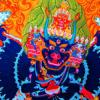
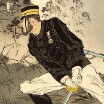




















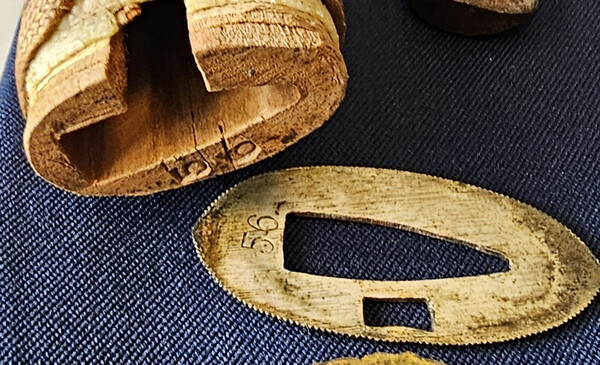






.thumb.jpg.b6466cea136551aae9be6f824c242d1a.jpg)
